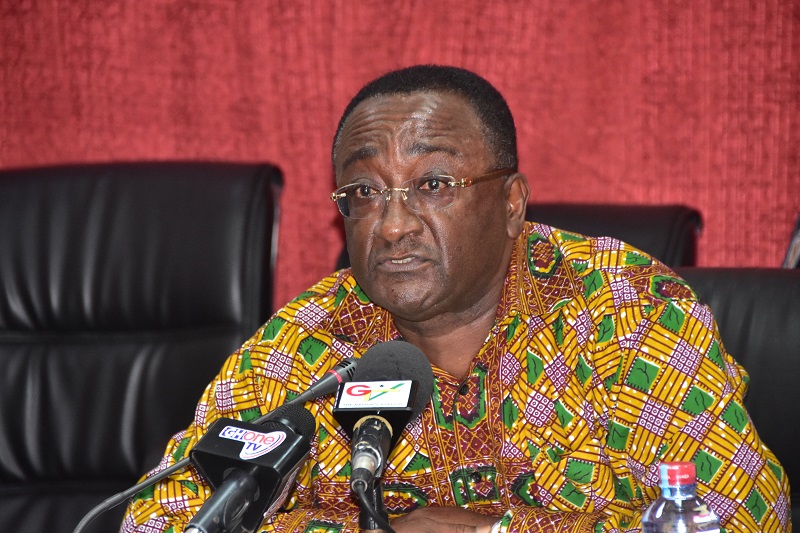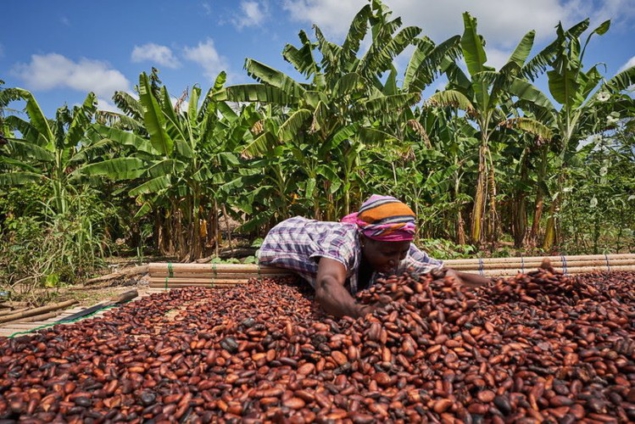Farmers who had been pushing for a 25 percent increase in the guaranteed farm gate price at which government purchases their cocoa were left disappointed last week as the Minister of Food and Agriculture, Dr Owusu Afriyie-Akoto announced that the producer price set for the 2020/21 crop season was being retained for the 2021/22 crop season which is about to commence.
Government has maintained the Cocoa Producer Price of GHc10,560 per metric ton for the new cocoa crop season which takes effect from October 8 2021.
This translates into GHc660 per bag – the same price that farmers were given in the 2019/2020 crop. It represents 87.15 percent of the Free On Board value
Announcing the cocoa producer price, Dr Afriyie Akoto stressed that the price, which includes a Living Income Differential of US$400 dollars per metric ton, is the highest in the sub region, despite a dip in global cocoa prices.
“This price is the highest within the sub-region. This demonstrates the government’s commitment to sustain the interest of the cocoa farmer in producing cocoa and also to improve the well-being of cocoa farmers. The producer price of cocoa was maintained when all cocoa producing countries were contemplating a reduction in their farm gate prices following a slump in the terminal cocoa market as a result of the Covid-19 pandemic,” he stated.
To be sure, farmer’s hopes of an increase for the new crop season were a far stretch. The average price of cocoa decreased marginally during the first eight months of this year by 1.0 percent to trade at US$2,555.9 per tonne due to ample supply from major cocoa producers. However Ghana sells its cocoa at a premium price on the futures market, which allows it to lock onto prices for the next crop season so as to negotiate and secure an annual receivables backed loan from a consortium of international and local banks with which to finance the state’s purchases of cocoa beans from the farmers. This strategy allowed Ghana to enjoy a 4.2 percent increase in the price actually realized during the first eight months of the year.

However, the farmers had pinned their hopes of an increase on what they perceived to be an improved compliance to the payment of the US$400 per tonne Living Income Differential insisted on by Ghana and its neighbour, Cote d’Ivoire – who between them produce nearly 70 percent of global cocoa beans production – since the start of the 2020/21 crop season. This LID is meant entirely for farmers and it enabled both countries to increase their respective producer prices paid to farmers by a uniform 28 percent for their produce during the just ended 2020/21 crop season.
But while some global confectioners have publicly insisted they are committed to paying the LID despite falling demand and revenue, West African regulators say certain buyers are trying to make up for it by cutting the “country premium” they pay in Ghana and Ivory Coast; and lower rates are upsetting the system that’s allowed them to increase farmers’ income. In response however both Ghana and CIV have kept up the pressure to ensure compliance by threatening to withdraw from the sustainability agreements they both have with the major chocolate manufacturers, who are their biggest customers. Without those agreements – which evidence the fact that the cocoa they use in manufacturing their products are cultivated and harvested without using child labour and are done in an environmentally friendly manner – customers of their confectioneries in Europe and North America in particular refrain from patronizing their brands.
But the chocolate producers are still pushing back using a variety of methods to evade paying the LID, including the use of third party intermediaries for their purchases. They claim that the global economic slowdown has affected demand for their products and consequently are hard put to make profits after adding the LID to their costs.
The success of the LID now depends on how much value sustainability continues to add, as well as the world’s hunger for chocolate.
The producer price is the price at which the country’s cocoa sector regulator – Ghana Cocoa Board (COCOBOD) – buys the produce of cocoa farmers at the farmgate.
The prevailing cocoa producer price for the 2019/20 season was ¢515 per 64kg bag of beans, which was an 8.42% increase over the ¢475 per bag in the 2018/19 season.
The increase in farmgate price made possible by the incentives to farmers resulting from the commencement of the LID has facilitated the biggest cocoa production levels Ghana has generated to date, this also aided by favourable weather and deliberate, ultimately successful strategies by COCOBOD to improve productivity per acre. The 2020/21 crop season has generated about 1.04 million tonnes of cocoa, up from the previous record of 1.25 million tonnes achieved in 2008.
Yet at the same time, the coronavirus pandemic, which shut down marketplaces and airport gift shops around the world, has weakened demand for chocolate.
Instructively, Ghana has been struggling to hit its cocoa export sales targets for the 2021/2022 season, with sales at the end of June totalling around 350,000 tonnes-worth of export contracts, sources at the cocoa regulator said at that time.
“The goal for us is to be able to sell at least 600,000 tonnes and I think that’s possible with a good differential, so we’re not worried,” a source at COCOBOD told Reuters at the end of June. It is unclear to what extent export contracts have picked up since then but the fact that the 2021/22 edition of its annual syndicated loan was oversubscribed despite the amount sought being increased to US$1.5 billion, up from US$1,3 billion in the previous few years is a good sign.
Getting chocolate makers to pay the right premium for their beans as they forward sell contracts before the start of the season in October is crucial to determining what farm gate price to offer cocoa farmers for the next season. Thus, although the increase in the loan amount sought has suggested improved export volumes contracted, the refusal of government to raise the producer price further points to difficulties in getting better prices for those contracts, an indication that LID is still being evaded in some quarters.











